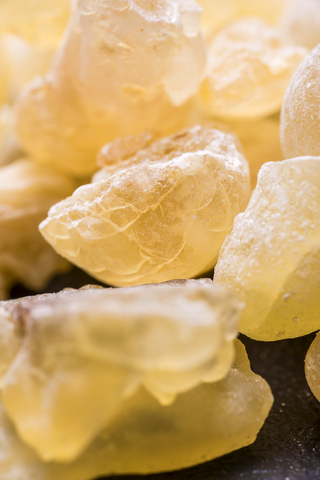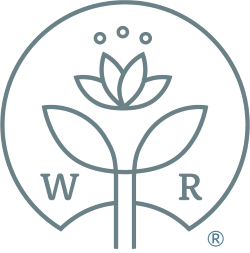Boswellia

Also known as Boswellia carterii, Olibanum, Indian Franckincense, Arabic Frankincense, and Salai guggal.
Introduction Frankincense was one of the three gifts given to the Baby Jesus by the Three Magi, recorded as being of equal value with myrrh and gold. Frankincense was used to slow down the pulse and deepen respiration, keeping meditation focuses and helping the mind stay on prayer. The ancient Egyptians used frankincense in embalming the dead, but they also used it in cosmetics.
Constituents The venerable herbalist Mrs. Grieve noted the constituents of frankincense as follows: resins (65%), volatile oil (6%), water soluble gum (20%), bassorin (6-8%), and plant residue (2-4%). The resins contain boswellic acid and alibanoresin.
Parts Used Dried resin, collected from stems and trunk.
Typical Preparations Powdered resin added to water, tincture, and very rarely as a tea. For internal use, sometimes mixed with myrrh or cress. In aromatherapy, frankincense is compatible with bergamot, cinnamon, clary sage, geranium, grapefruit, jasmine, lavender, lemon, myrrh, neroli, orange, patchouli, pine, rose, sandalwood, tangerine, and ylang ylang. In Ayurvedic medicine, frankincense is combined with turmeric to make teas, tinctures, or encapsulations for treating arthritis and muscle pain.
Summary Frankincense is traditionally used to treat coughs. Modern research confirms that it contains phytochemicals that stop the production of leukotrienes that cause constricted airways and inflammation. Frankincense is often described as a stimulant, but its actions are only similar to those of stimulants in relieving the symptoms of asthma, bronchitis, colds, and flu. The modern uses of frankincense are much more varied: During labor, use a few drops of essential oil or tincture in a diffuser. It will help the mother-to-be to focus on her breathing, especially if using Lamaze. During menstruation, use 8-10 drops in bath water for a long, warm soak. Frankincense relieves cramps, corrects loss of focus, and reverses fatigue. For asthma, bronchitis, coughs, colds, flu, and laryngitis, use 2-3 drops of essential oil or tincture in 1 ounce of carrier oil. Rub the mixture or use as a plaster on chest for asthma, bronchitis, coughs, and cold, and on throat for laryngitis. You can also add 2-3 drops to vaporizer water for use in steam inhalation. For wounds, scars, and bedsores, use 2-3 drops in a cold compress applied directly to the inflamed area. Do not apply pressure to the wound. For acne, blemishes, or oily skin, wet a cotton ball with and add 2 or 3 drops of essential oil or tincture. Apply to affected areas with a gentle touch. For hemorrhoids, massage a mixture of 2-3 drops of tincture or essential oil in 1 oz of lanolin into affected areas. For nasal congestion, sprinkle a few drops on a handkerchief and inhale periodically, or add to vaporizer water as above. For arthritis or painful joints, add 3-5 drops in 1 ounce of carrier oil and massage on affected areas. Also effective as a hot compress. To relieve burning of urinary tract infections, use 8-10 drops in bath water, in addition to using medications prescribed by your health practitioner and drinking unsweetened cranberry juice. For heavy periods, use 3-4 drops in 1 ounce of carrier oil and massage on lower abdomen area regularly. To help relieve shortness of breath, use 3-5 drops in a steam inhalation or diffuser. To improve circulation, mix 4-5 drops with 1 ounce of carrier oil and massage on affected areas of the body, such as feet or hand. Can also use in bath water. To relieve mental or physical fatigue, use 3-5 drops in a diffuser. For use as a toner, wash face, then use 2-3 drops with 1 ounce of almond or avocado carrier oil, and rub gently onto face.
Precautions If you take a blood thinning medication such as Coumadin, Plavix, or Trental, do not take frankincense directly by mouth. Frankincense should not be applied to broken or abraded skin.
PURCHASE BOSWELLIA (FRANKINCENSE) RESIN EXTRACT
For educational purposes only This information has not been evaluated by the Food and Drug Administration. This information is not intended to diagnose, treat, cure, or prevent any disease.
This information courtesy of MOUNTAIN ROSE HERBS, with full, written permission for reuse. For further traditional information concerning Boswellia/Frankincense, please visit this excellent resource fromBotanical.com. Used with full, written permission.







